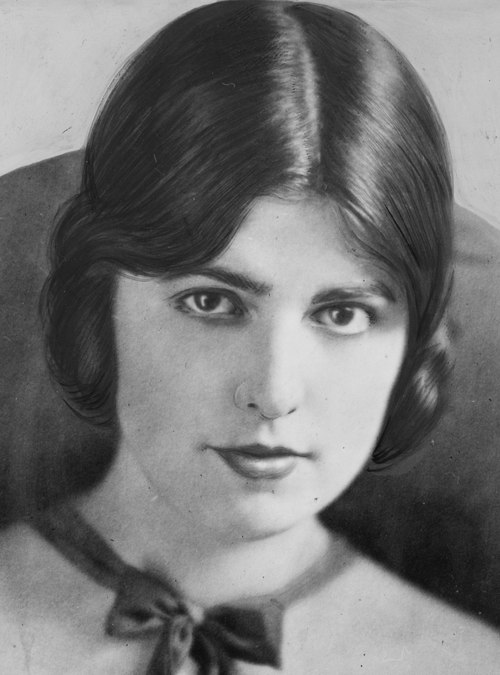Story One: Series
The Dark Side of Hollywood
The Silent Era — Hollywood’s Glamorous Beginning Masked a Legacy of Abuse
By Lori Walker Sartain
June 14th, 2025
The Dark Side of Hollywood: Part One
Hollywood was born in glitter but built on silence—not just in its films, but in the stories of its women.
During the early 20th century, as silent film captivated audiences and created the first movie stars, a different narrative played out behind closed doors. Behind the velvet curtains of Hollywood’s earliest studios lay a deeply embedded culture of exploitation, control, and sexual coercion—a system that viewed women not as artists, but as assets to be molded, used, and discarded.
The Birth of the Casting Couch
By the 1910s, film production had moved west to California, where legal oversight was minimal and the industry was still shaping its moral code—or lack thereof. Women, often young and poor, were drawn by the promise of stardom. The price? For many, access to roles depended on sexual submission to directors, producers, and studio heads.
The term “casting couch” was already in use by the 1920s, its meaning understood but rarely spoken. Studio moguls like Harry Cohn (Columbia Pictures), Louis B. Mayer (MGM), and Darryl F. Zanuck (20th Century Fox) were rumored to trade roles for sexual favors. With no unions, no #MeToo, and no Twitter, actresses had nowhere to turn.
“If you want to see the girl next door, go next door.”
— Darryl F. Zanuck, whose office had a private couch behind closed doors
Virginia Rappe: A Hollywood Death That Exposed the Industry’s Darkness
In 1921, aspiring actress Virginia Rappe attended a party hosted by silent film star Roscoe “Fatty” Arbuckle. Within days, she was dead from internal injuries. Arbuckle was accused of raping her with a foreign object—a crime so shocking, it led to three sensationalized trials.
Although Arbuckle was acquitted, the press and public saw through the studio’s efforts to sanitize the scandal. The first cracks in Hollywood’s image began to show, and the industry rushed to establish the Hays Code—not to protect women, but to control public perception.
Louis B. Mayer and the Manufactured Starlet
At MGM, Louis B. Mayer shaped a generation of female stars—Greta Garbo, Joan Crawford, Judy Garland—with strict control over their appearances, behaviors, and even reproductive rights.
Mayer believed the image of purity sold tickets. But behind that façade, actresses were:
-
Weighed weekly, threatened with contract termination if they gained weight.
-
Given drugs to stay thin and alert—amphetamines in the morning, barbiturates at night.
-
Forced into silence if they reported sexual advances.
Young girls were turned into icons, while their autonomy was stripped away.
“He would call me ‘my little hunchback’ and touch my breast when no one was looking.”
— Judy Garland, in a posthumous memoir, describing Mayer
Coercion and Control as Industry Norms
In the silent era, studio contracts functioned as legal slavery. Actresses were signed to seven-year deals that forbade them from choosing roles, dating without permission, or speaking to the press independently. These contracts also made it impossible to escape predatory bosses.
Actresses like Clara Bow (the original “It Girl”) were used for their sex appeal and then trashed by the same system that elevated them. Her real trauma—abuse, scandal, mental breakdown—was mocked by tabloids and suppressed by studios.
Women Behind the Camera—Erased
Ironically, the silent era offered brief freedom for female directors and writers—Lois Weber, Dorothy Arzner, and Frances Marion were some of the most successful filmmakers of the 1910s and ’20s. But by the late 1920s, as talkies emerged and corporate structures solidified, women were systematically pushed out of leadership roles.
Men took over the power positions. Women went back in front of the lens, under stricter control than ever before.
Silence as Survival
For many actresses, silence was the only way to survive. Speaking out meant career suicide, being labeled “difficult,” or worse, being institutionalized—a fate that befell stars like Frances Farmer and Jean Seberg decades later.
There were no HR departments. No publicists protecting victims. Only studio fixers—men like MGM’s Howard Strickling or Paramount’s Joe Willicombe—whose jobs were to cover up scandals, pay off reporters, and manage blackmailers.
A Legacy Built on the Objectification of Women
The images we celebrate from the silent era—women in shimmering gowns, blowing kisses to the camera—were often constructed through coercion, not consent.
Behind every iconic shot of a flapper or femme fatale was a vulnerable actress navigating a minefield of male power, image control, and emotional trauma.
Conclusion: The Silence That Still Echoes
The “silent” era of Hollywood was never truly silent. It simply muted the voices of women.
The abuses institutionalized during this time created a model that would persist for generations. As the entertainment industry grew, so too did the tactics of control, the gaslighting, and the exploitation—making Hollywood’s golden age a gilded cage for women who dared to dream.

No comments:
Post a Comment